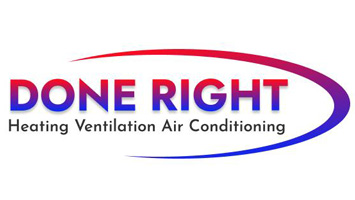
The idea of installing both a furnace and heat pump can feel a bit strange at first. After all, why should you need two sources of heat? Even though furnaces and heat pumps both provide energy-efficient heat, the changes in their design actually make installing both of them a practical option. It’s not for all of us, but with the right conditions you will definitely benefit from owning a furnace and a heat pump.
You’ll want to consider several factors in order to confirm if this kind of setup helps you. Your local climate and the size of your home are both especially important, particularly for the heat pump. This is because some models of heat pumps start to run less efficiently in winter weather and larger homes. That being said, you can still take advantage of heat pump installation in West Allis & Milwaukee area.
Heat Pumps Can Be Less Efficient in Cold Weather
Heat pumps are commonly less efficient in cold weather because of how they provide climate control to begin with. Unlike furnaces, which ignite fuel to provide heat, a heat pump reverses its stream of refrigerant to extract heat from outdoor air. This heat is then drawn inside and circulated around your home. As long as there is still a bit of heat energy in the air, a heat pump should function. But the lower the temperature, the less efficient this process is.
The less heat energy is available outside, the more effort is required for a heat pump to pull heat indoors to maintain your desired temperature. It may depend on the type of make and model, but heat pumps generally start to lose out on efficiency at temperatures of 40 degrees and below. They can still be an energy-efficient option until 20-25 degrees, after which a gas furnace will be more effective.
What Temperatures Do Heat Pumps Work Best In?
Heat pumps work best in moderate climates 40 degrees and up. That said, you don’t have to lose out on the benefits of a heat pump just because your local climate is colder. As a matter of fact, that’s why having both a furnace and heat pump might be worth the costs. You can keep the heat pump for energy-efficient heat until the weather is chilly enough to justify shifting to something like a gas furnace.
Some makes and models claim greater efficiency in winter weather. For example, the Lennox MLA heat pump is capable of operating at 100% capacity at 0°F. It can even continue running in temperatures as cold as -22°F. For maximum energy efficiency, you’ll likely still want to use the furnace in severely cold weather.
So Should I Get a Heat Pump if I Use a Gas Furnace?
If you’re serious about maintaining the most energy-efficient HVAC system possible, owning a heat pump and gas furnace at the same time warrants the investment. Not only is a dual-heating system flexible, but it features other benefits like:
- A source of backup heating – A redundant heating system means even if one breaks down, you still have the ability to heat your home. It may not be the most energy efficient, but it’s better than shivering in an unheated home while you wait for repairs.
- Reduced energy costs – The ability to pick which heating system you use based on the highest energy efficiency reduces your total costs. Smaller heating bills over the lifetime of these heaters can really add up to lots of savings.
- Less strain on both systems – Rather than running one system all winter long, heating duties are divided between the furnace and heat pump. Essential components could last longer given that they’re not under continuous use.
If you’re still unsure about heat pump installation in West Allis & Milwaukee area, don’t hesitate to get in touch with your local certified technicians. They can walk you through your home’s comfort needs and help you decide if a dual-heating HVAC system is the ideal option.
